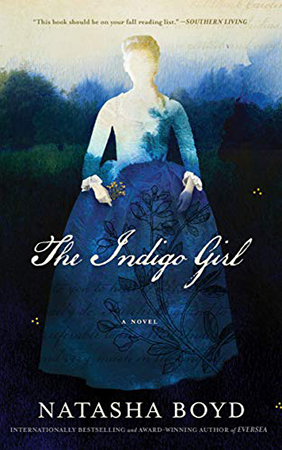 Natasha Boyd paints a riveting story of a true-life American heroine whose ambition, tenacity, and entrepreneurial pursuits are confronted with betrayal, arduous hard work, and sacrifice as she navigates a new industry called indigo dye production.
Natasha Boyd paints a riveting story of a true-life American heroine whose ambition, tenacity, and entrepreneurial pursuits are confronted with betrayal, arduous hard work, and sacrifice as she navigates a new industry called indigo dye production.
In 1739 Eliza Lucas was sixteen. Her father, determined to return to Antigua to enhance his military career, gave Eliza the responsibility of running the family plantations in what was then called Charles Town, South Carolina. Since Eliza’s two older brothers were in schools abroad, she took on the responsibilities of caring for her frail and infirmed mother and handling her younger sister’s education. Eliza also dealt with a cruel overseer and the enslaved people who were the workforce of the plantations.
Eliza had a passion for horticulture, which, combined with her discovery of the profitability of exporting indigo dye, would save the plantations from ruin. She enlists help from her father, who sends two envoys, one of whom was a childhood friend and a slave. Eliza set up a deal with the slave to teach her the intricate dye-making process. In return, she would teach him to read, which was against the law then.
The story highlights the trials and tribulations of a young woman with the inner strength to withstand losses and betrayals while remaining firm in her beliefs. She found love and true friendship while making her mark on a new nation and encouraging growth and prosperity for South Carolina.
It is interesting to note that the character Eliza Lucas is a true historical figure, although there are no photographs of her. Her progeny has been linked to the declaration of this nation’s independence and gives tribute to the name Pinckney as in Eliza Lucas Pinckney.
Readers Ink Club Member Rating: 9
Review by Sherre Johnson
